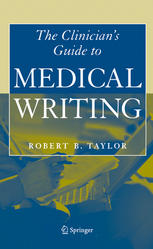

Most ebook files are in PDF format, so you can easily read them using various software such as Foxit Reader or directly on the Google Chrome browser.
Some ebook files are released by publishers in other formats such as .awz, .mobi, .epub, .fb2, etc. You may need to install specific software to read these formats on mobile/PC, such as Calibre.
Please read the tutorial at this link: https://ebookbell.com/faq
We offer FREE conversion to the popular formats you request; however, this may take some time. Therefore, right after payment, please email us, and we will try to provide the service as quickly as possible.
For some exceptional file formats or broken links (if any), please refrain from opening any disputes. Instead, email us first, and we will try to assist within a maximum of 6 hours.
EbookBell Team

5.0
110 reviewsThis book teaches what clinicians need to know about medical writing and publishing. It is for the physician, physician assistant, or nurse practitioner who sees patients and also wants to contribute to the medical literature, as well as for the assistant professor aspiring to promotion. It is written from the viewpoint of the clinician seeking the personal enrichment that writing can bring. Readers learn how to translate observations and ideas from practice into written form and eventually into print. The guide for this journey is Dr. Robert B. Taylor, a distinguished leader in academic family medicine. With a clear, conversational writing style, Dr. Taylor shares what he has learned—what works and what doesn’t—through the course of publishing 22 medical books and several hundred papers. He draws from his successes (and some failures) as he tells helpful ways to write review articles, case reports, editorials, letters to the editor, book reviews, book chapters, reference books, and research reports. Loaded with practical advice and real-world examples, this text benefits readers who are new to medical writing and those who have authored a few articles or chapters and want to improve their skills.